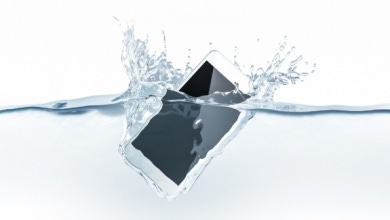An expert offers important tips for handling devices that have suffered water damage from flooding or other disaster.
September 19, 2017

By Vendor
When Hurricane Harvey unleashed damage on the Houston area, I was reminded of how important it is to understand the consequences of handling damaged devices incorrectly. Technology users store so much vital information on devices that the idea of it being taken away can be unfathomable.
If you were posed with the challenge of lost data, what should you do?
Would you immediately try to fix it with whatever tools you had?
Sometimes leaving the device as-is is the best thing you can possibly do.
Handling water-damaged devices correctly is one way to minimize data loss after the fact, but there are ways to prepare in order to prevent data loss from natural disasters.
The most effective way to do so is to incorporate a strategy for backing up data within your disaster recovery plan (DRP) and business continuity plan (BCP).
A solid DRP and BCP should cover everything from usual reasons for data loss, like water damage, to hackers and other criminals.
Your plan should be equipped to handle any type of hazard.
As an MSP, understanding what your own data needs are in order to survive a disaster will also help you better prepare your clients for the aftermath and recovery.
Other assessments, like a risk assessment and business impact analysis will also help in these types of situations.
For those affected by hurricanes or other severe weather, I have taken my experience and put together eight important tips to remember after your device has suffered water damage from flooding or other disaster.
If your clients find themselves dealing with such a scenario, consider applying these pointers:
1. Never assume that data is unrecoverable, no matter what it has been through – Making assumptions is the worst thing you could do for your data.
Often times, individuals will assume that data is unsalvageable after water damage, causing them to lose hope.
2. Never attempt to plug in or turn on water damaged-devices – Plugging in a water-damaged device can cause severe further impacts to your devices and is also harmful to your personal safety.
3. Do not shake, disassemble or attempt to clean any hard drive or server that has been damaged – Improper handling can cause further damage, which can lead to valuable information that might have been recoverable to become lost.
4. Never attempt to dry water-damaged media – Opening the media incorrectly can make it impossible for a professional to recover the data.
Exposing it to heat, such as that from a hairdryer, can damage the drive components.
Also, once the media begins to dry, corrosion begins.
Keeping a water-damaged drive damp can actually improve your chances for recovery.
5. Do not attempt to operate visibly damaged computers or hard drives – Doing so could cause further damage and render your data unrecoverable.
6. Do not freeze-dry media – This also causes irreparable damage to the device and can render data unrecoverable.
7. Don’t use common software utility programs on broken or water-damaged devices – Data recovery software is only designed for use on a drive that is completely and mechanically functioning.
8. For mission-critical situations, contact a data recovery professional before any attempts are made to reconfigure, reinstall or reformat. Recovering time-sensitive materials is critical to the overall success of a business or individuals’ recovery.
If you are unsure about which path to take with your data, it is always best to contact a professional immediately.
The importance of back-ups
Many people will wonder what they can do to prevent data loss from a hurricane.
It’s a very simple task: back up your data.
Data can and should live and breathe in a secondary back-up environment to preserve its longevity.
As a service provider, urging your clients to perform regular back-ups will reassure them that their data is safely stored during disasters.
Storing data in an offsite location gives clients a separate area to keep data safe.
Even for small businesses or individual users, there are free or paid programs that can configure storage systems to run backups without intervention.
Be sure that backups are checked frequently for proper functionality.
In addition, advise your clients to invest in more than just one backup.
Having at least two or three – one on the device itself, one on an external storage medium and one offsite – will give your clients peace of mind.
With preparedness for disaster, your recovery process will be a little less stressful and worth the cost.
About the Author: An experienced data recovery executive, Todd Johnson is responsible for all revenue generating and customer support activities for the Data & Storage Technologies business line of Kroll Ontrack across the globe. Specializing in data recovery, email extraction, ediscovery, data destruction and tape services, Kroll Ontrack is the leading provider of data solutions for both enterprise and user levels.
You May Also Like
